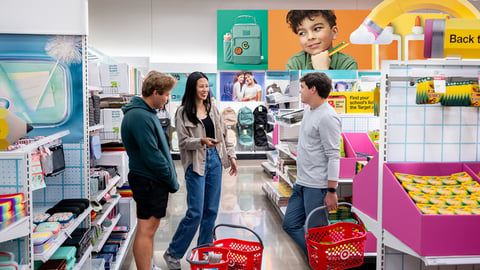Prime Day Expected To Fuel Online Sales Boom
With Amazon's Prime Day expected to be the key driver, Adobe is forecasting record online sales across retail over a four-day period beginning July 8.
U.S. retailers are expected to drive a record $23.8 billion in online spending, an increase of 28.4% year-over-year. This figure would represent the equivalent of two Black Fridays, which in 2024 saw online spending hit $10.8 billion.
Shopping on mobile devices is set to hit an all-time high, driving 52.5% of online sales (versus desktop shopping) at $12.5 billion. This continues to be a growth driver for U.S. retailers, with more impulse shopping happening on mobile devices, Adobe said.
Overall, discounts across U.S. retailers will be in the range of 10% to 24% off the listed price. Across categories, Adobe expects apparel to have the biggest deals at 24% (versus 20% last year). Other categories with major discounts will include electronics at 22% (versus 23%), televisions at 17% (versus 16%), appliances at 16% (versus 14%), toys at 15% (versus 15%), furniture at 14% (versus 16%), computers at 12% (versus 11%), and sporting goods at 10% (versus 11%).
Consumers are expected to trade up to higher-ticket items, driven by strong discounts. The share of the most expensive goods is set to increase by 18% compared to average levels year-to-date. In categories including electronics, the share of the most expensive goods is expected to rise by a significant 52%. The trend holds across sporting goods (up 32%), appliances (up 29%), furniture (up 28%), toys (up 18%), personal care (up 15%), and apparel (up 9%). Categories with a drop include home and garden (down 4%) and grocery (down 6%), as consumers embrace lower-priced products.
From K-12 to higher education, shopping for essentials is expected to take place ahead of the school season, which generally begins in mid-August to early September. Adobe expects a boost in online sales for backpacks and lunchboxes (up 225% compared to the daily average in June 2025), kids' apparel (up 200%), and general school/office supplies (up 180%). Strong growth is also expected in twin/full mattresses and toppers (up 55%), bedroom/bathroom linens (up 49%), microwaves (up 75%), headphones and speakers (up 150%), and computers (up 140%).
Beyond back-to-school shopping, Adobe said consumers have been waiting for good deals before hitting the buy button on products they were eyeing. Strong growth is expected in home security products (up 200% compared to the daily average in June 2025), along with e-readers (up 180%), televisions (up 150%), luggage (up 130%), streaming devices (up 135%), vacuums (up 130%), small kitchen appliances (up 95%), smartphones (up 90%), smart home items (up 80%), and books (up 65%).
Additional insights from Adobe include:
- Buy Now, Pay Later (BNPL): Usage is expected to see a slight uptick, as budget-conscious consumers seek greater flexibility in managing their spending. During the Prime Day event, Adobe expects BNPL to drive between $1.8 billion and $1.9 billion of overall online spend. This represents an 8% share, up from 7.6% last year.
- Impact of Social Influencers: Across major marketing channels, paid search will remain the top driver of retail sales during the Prime Day event, with its expected share of revenue around 28%, up by 1% to 3% year-over-year. In affiliates and partners, which include social media influencers, the share of revenue is set to come in at 19.9%, but growth has been more substantial (up 16% year-over-year). Adobe's data also shows that influencers are set to convert shoppers (individuals making a purchase after seeing influencer content) 10 times more than social media overall.
- Impact of Inflation: Strong spending during the Prime Day event will be driven by net-new demand, as opposed to higher prices. The Adobe Digital Price Index, which tracks online prices across 18 product categories, shows that e-commerce prices have fallen for 33 months, down 2.01% year-over-year in May 2025. Adobe's numbers are not adjusted for inflation, but if online inflation were factored in, there would be even higher growth in topline consumer spend.




